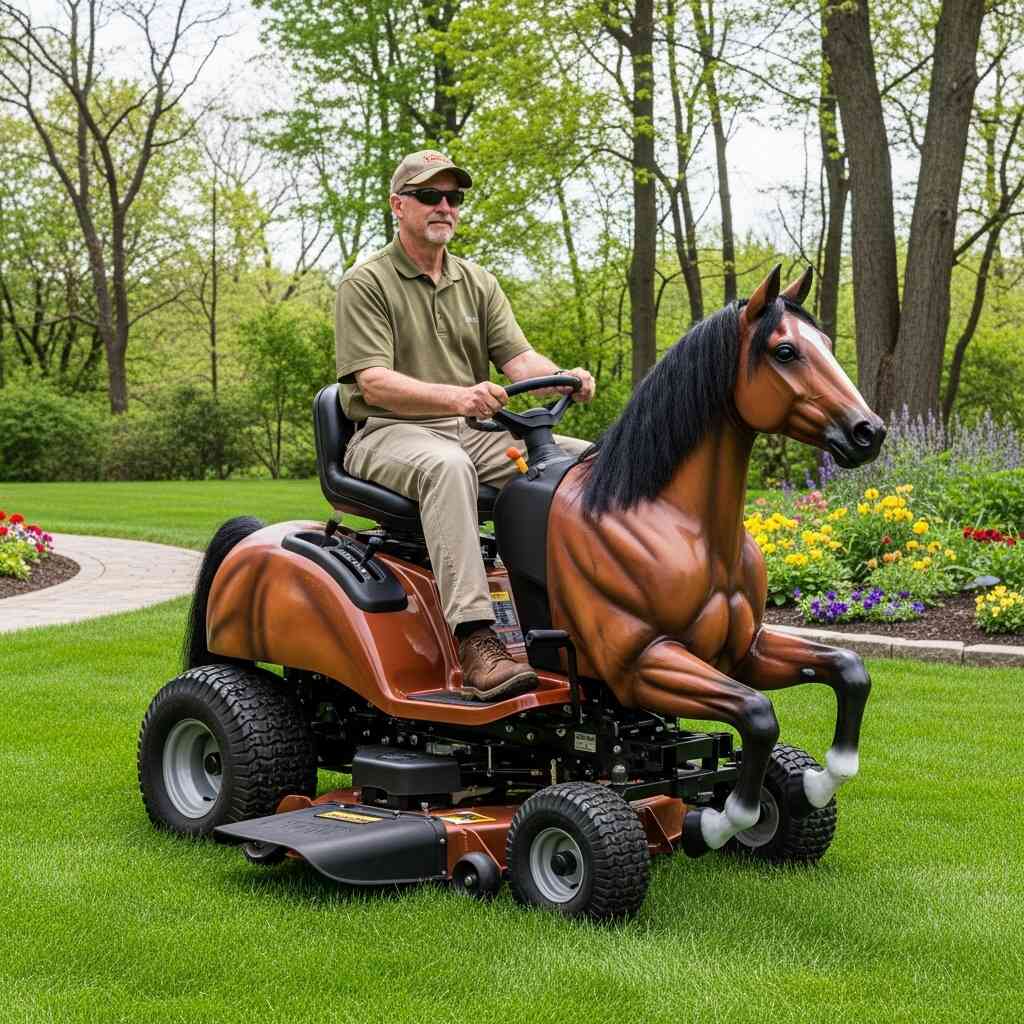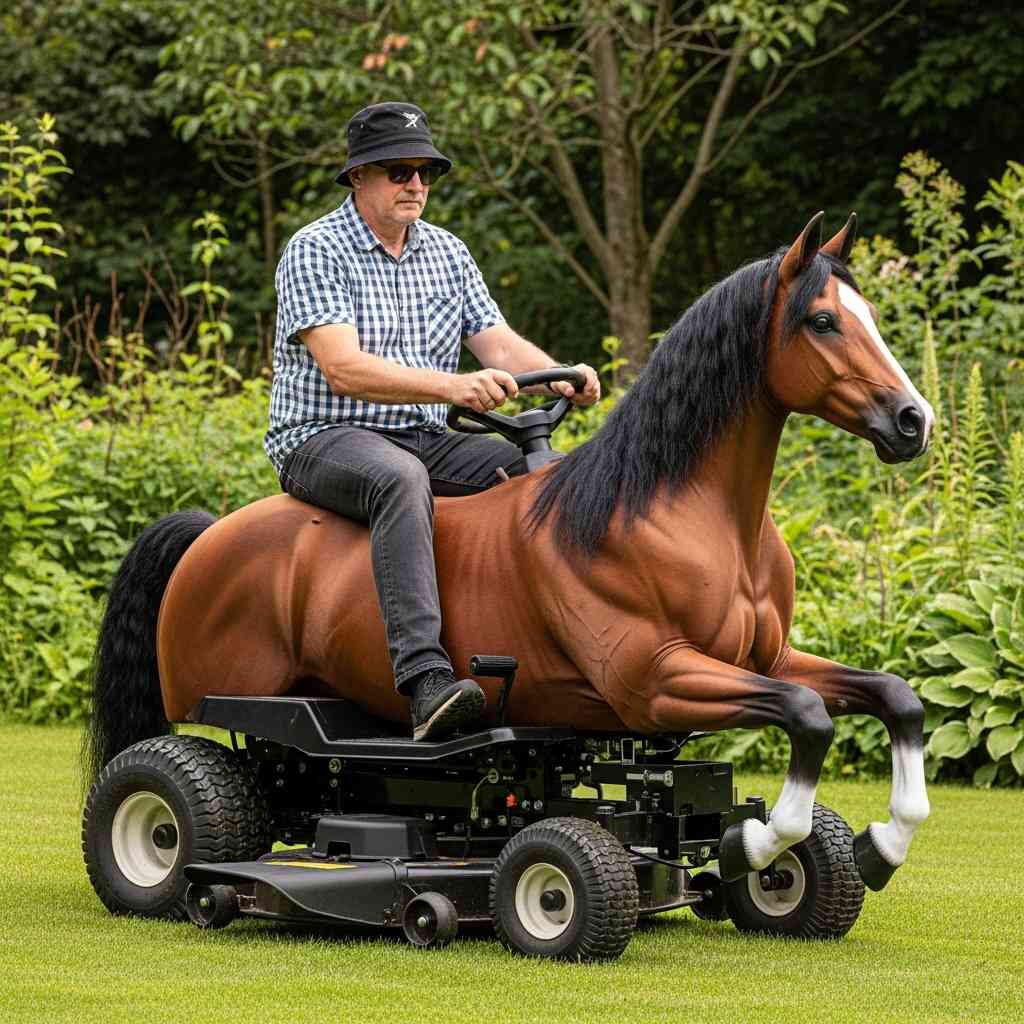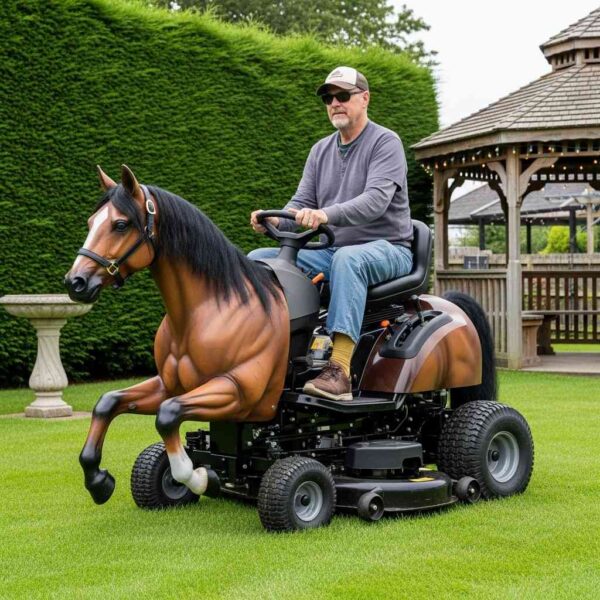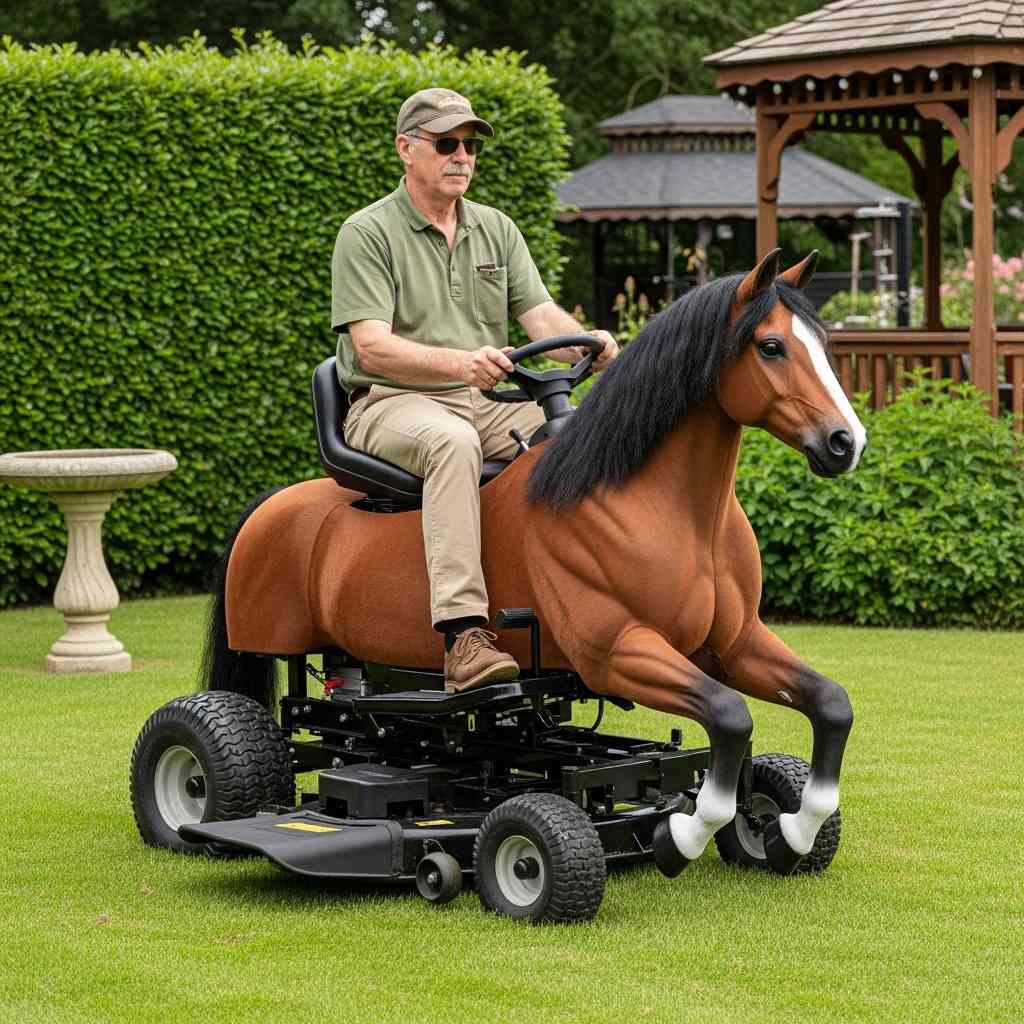Agricultural history is a rich tapestry woven with the threads of innovation, necessity, and adaptation. Among the many tools that have shaped the way humans cultivate land and manage landscapes, horse lawn mowers hold a unique and often overlooked place. These early mechanical devices represent a critical transitional phase in agricultural development, bridging the gap between manual labor and mechanized farming. Long before the advent of gasoline-powered tractors and electric lawnmowers, horse-drawn mowers revolutionized the way farmers and estate managers maintained large expanses of grassland.
The introduction of horse lawn mowers marked a significant leap forward in efficiency, productivity, and landscape maintenance. While they may seem quaint by today’s standards, these machines were once cutting-edge technology—symbols of progress in an era when agriculture was still largely dependent on human and animal labor. Their invention and widespread use reflect broader societal changes, including the industrialization of rural life, the expansion of land ownership, and the growing importance of aesthetics in both urban and rural settings.
This article delves deeply into the historical significance of horse lawn mowers, exploring their origins, technological evolution, and lasting impact on agricultural practices. By examining how these machines came to be, how they functioned, and how they influenced land management techniques, we gain a richer understanding of the role they played in shaping modern agricultural systems. The following sections will explore the early days of lawn maintenance, the development of horse-drawn mowing technology, and the broader implications of this innovation for society and the environment.

Contents
Early Days of Lawn Maintenance
Before the invention of horse lawn mowers, maintaining large areas of grass was a labor-intensive task primarily accomplished through manual methods. In ancient civilizations such as Egypt, Greece, and Rome, grassy areas around temples, palaces, and villas were kept short using hand tools like sickles or scythes. These tools required considerable physical effort and skill, and the process of cutting grass was time-consuming and inefficient, especially for large estates or communal lands.
In medieval Europe, the concept of manicured lawns began to take root among the nobility. Lawns were not only functional but also symbolic—representing wealth, status, and control over the land. However, the maintenance of these lawns remained rudimentary. Servants and laborers would cut the grass using scythes, a method that had changed little since antiquity. The process involved swinging the curved blade in rhythmic arcs, requiring both strength and precision. This method was effective for small areas but impractical for larger fields or expansive gardens.
As population growth and agricultural expansion increased the demand for more efficient land management, the need for better tools became apparent. Innovations in metalworking and mechanical engineering during the Renaissance and early Industrial Revolution laid the groundwork for more advanced lawn care equipment. It was within this context of evolving technology and increasing land use that the idea of mechanizing grass cutting began to take shape.
By the 17th and 18th centuries, some experimental attempts were made to develop mechanical devices that could assist in cutting grass. These early prototypes were rudimentary and often unreliable, but they signaled the beginning of a shift toward mechanization. The stage was set for a major breakthrough—one that would come in the form of horse-drawn mowers.

The Birth of Horse Lawn Mowers
The development of horse lawn mowers can be traced back to the late 18th and early 19th centuries, a period marked by rapid industrial and agricultural advancements. As farms expanded and landowners sought more efficient ways to maintain their properties, inventors and engineers began experimenting with horse-powered solutions for cutting grass.
One of the earliest recorded attempts at creating a horse-drawn mower was made by British inventor John Fowler in the early 1800s. Although his design was relatively simple, it demonstrated the potential of using animal power to reduce the reliance on manual labor. Around the same time, American and European agriculturalists were also exploring similar concepts, driven by the need to maintain increasingly large estates and farmlands.
The key innovation behind horse lawn mowers was the integration of a cutting mechanism with a frame that could be pulled by one or more horses. These machines typically featured a series of rotating blades or reciprocating knives mounted on a sturdy wooden or metal chassis. As the horse moved forward, the blades would engage the grass, cutting it evenly across a wide swath. Some models included adjustable heights, allowing users to control the length of the cut—a feature that would later become standard in modern lawnmowers.
By the mid-19th century, horse lawn mowers had become more refined and widely adopted. Manufacturers in Britain, France, Germany, and the United States began producing standardized models, often advertising them in agricultural journals and trade catalogs. These machines varied in size and complexity, from lightweight models suited for small estates to heavy-duty versions designed for large-scale farm operations.
The adoption of horse lawn mowers represented more than just a technological advancement; it symbolized a shift in how people approached land management. No longer reliant solely on human labor, landowners and farmers could now cover greater areas in less time, improving both productivity and aesthetics. This change had profound implications for the organization of rural labor, the appearance of cultivated landscapes, and the overall efficiency of agricultural enterprises.

Technological Evolution and Design Improvements
As the 19th century progressed, so too did the design and functionality of horse lawn mowers. Engineers and manufacturers continually refined the mechanisms, incorporating innovations that improved performance, durability, and ease of use. One of the most significant developments was the transition from simple push-type mowers to self-propelled models powered entirely by the motion of the horse.
Early horse mowers required an operator to guide the machine while walking alongside the horse, much like a plowman guiding a plow. However, as designs evolved, operators could sit atop the mower, controlling the direction and speed more effectively. This improvement not only reduced physical strain but also allowed for more precise cutting patterns, particularly in formal gardens and parklands where symmetry and uniformity were highly valued.
Another important advancement was the refinement of the cutting mechanism itself. Early models relied on stationary blades that required the mower to be dragged across the grass, which sometimes resulted in uneven cuts. Later versions incorporated rotary blades or oscillating knife bars that provided a cleaner, more consistent cut. These improvements were inspired by developments in other agricultural machinery, such as reapers and threshers, which had already benefited from similar mechanical enhancements.
Materials also played a crucial role in the evolution of horse lawn mowers. Initially constructed from wood with iron reinforcements, mowers gradually transitioned to all-metal frames, which offered greater durability and resistance to wear. Steel blades replaced traditional iron ones, enhancing cutting efficiency and reducing the frequency of sharpening. These material upgrades extended the lifespan of the machines and made them more suitable for continuous use over large areas.
Additionally, manufacturers began offering attachments and accessories that expanded the versatility of horse lawn mowers. Some models could be converted into hay cutters or used for trimming hedges and shrubs, making them multi-purpose tools for estate maintenance. Others featured adjustable wheels and leveling systems that allowed the mower to adapt to uneven terrain, ensuring a uniform cut even on sloped or rocky ground.
These technological advancements not only enhanced the performance of horse lawn mowers but also contributed to their popularity among landowners and agricultural workers. As the machines became more reliable and user-friendly, they were increasingly adopted across different regions and climates, further cementing their role in the history of agricultural innovation.

Impact on Agricultural Practices and Landscape Management
The introduction and widespread use of horse lawn mowers had a transformative effect on agricultural practices and landscape management. Prior to their adoption, maintaining large grassy areas was a time-consuming and physically demanding task that limited the amount of land that could be effectively managed. With horse mowers, however, landowners could maintain vast expanses of grass with significantly less labor, freeing up manpower for other agricultural tasks.
On large estates and country manors, the ability to keep lawns neatly trimmed became a mark of prestige. Well-maintained grounds were not only aesthetically pleasing but also served practical purposes, such as providing grazing areas for livestock, hosting outdoor events, and framing architectural features like gardens and courtyards. The visual appeal of a perfectly groomed lawn became a symbol of order and refinement, reinforcing social hierarchies and the cultural ideals of the landed gentry.
In agricultural contexts beyond private estates, horse lawn mowers were instrumental in managing pastures and hayfields. Regular mowing helped promote healthier grass growth, improved feed quality for livestock, and facilitated more efficient harvesting. Farmers who adopted these machines found that they could maintain larger fields with fewer workers, leading to increased productivity and economic returns.
Moreover, the use of horse mowers contributed to the professionalization of groundskeeping and landscaping. Skilled operators were trained to handle the machines, understand soil conditions, and maintain equipment—an emerging field that would later evolve into modern landscape architecture and turf management. The knowledge gained from operating horse mowers laid the foundation for future advancements in lawn care, influencing everything from irrigation techniques to soil fertilization practices.
Perhaps most importantly, the efficiency gains achieved through horse lawn mowers allowed for a reorganization of rural labor. Where once dozens of workers might have been needed to maintain a single estate’s grounds, a few individuals operating horse-drawn mowers could accomplish the same task. This shift not only reduced costs but also allowed for more strategic allocation of labor across agricultural enterprises.
The ripple effects of this technological shift extended beyond immediate land management benefits. Communities that embraced horse mowers saw changes in land use patterns, with more emphasis placed on recreational spaces, public parks, and ornamental gardens. These developments reflected broader societal trends toward urbanization, leisure culture, and the appreciation of nature as an aesthetic and social asset.

Cultural and Social Implications
Beyond their technical and agricultural functions, horse lawn mowers played a significant role in shaping cultural attitudes toward land, labor, and aesthetics. In the 19th century, as industrialization transformed economies and societies, the countryside became an idealized space of tranquility and order. The well-manicured lawn emerged as a powerful symbol of civilization, discipline, and progress—a stark contrast to the untamed wilderness that surrounded expanding settlements.
The ability to maintain extensive lawns and gardens was closely associated with wealth and social standing. Landowners who could afford horse mowers were able to demonstrate their affluence through immaculate landscapes that required both financial investment and technical expertise. This association between lawn care and status persisted well into the 20th century, influencing suburban development and residential landscaping norms.
At the same time, the mechanization of lawn maintenance introduced new social dynamics. The operation of horse mowers required specialized knowledge and training, leading to the emergence of a class of skilled groundskeepers and agricultural technicians. These individuals played a crucial role in maintaining the visual and functional integrity of large estates, public parks, and institutional grounds. Their work was often invisible yet essential, contributing to the broader perception of order and beauty in the landscape.
Horse mowers also had a democratizing effect on lawn care. While initially reserved for the wealthy elite, their increasing availability and affordability allowed middle-class landowners and institutions—such as schools, churches, and government buildings—to adopt similar maintenance practices. This shift contributed to the normalization of manicured lawns as a standard feature of public and private spaces, reinforcing cultural ideals of cleanliness, control, and aesthetic harmony.
Furthermore, the use of horse mowers fostered a deeper connection between humans and animals in agricultural settings. Unlike later mechanized equipment, horse-drawn mowers required a partnership between operator and animal, emphasizing cooperation, patience, and understanding. This relationship stood in contrast to the more impersonal nature of engine-powered machinery, which would dominate agriculture in the 20th century.
The cultural legacy of horse lawn mowers can still be seen today in historic estates, preserved agricultural sites, and vintage machinery exhibitions. Their presence serves as a reminder of a time when technology and tradition coexisted, and when the act of maintaining a lawn was as much about craftsmanship as it was about utility.

Environmental Considerations and Sustainability
While horse lawn mowers were primarily developed to improve efficiency and reduce labor demands, their environmental impact is worth considering in the broader context of agricultural history. Compared to modern motorized equipment, horse-drawn mowers operated without fossil fuels, producing no direct emissions and relying instead on renewable energy sources—namely, the biological power of horses and the sustenance provided through feed.
This low-carbon approach to lawn maintenance aligns with contemporary concerns about sustainability and environmental stewardship. In an age where climate change and resource depletion are pressing issues, revisiting older technologies that minimized ecological disruption offers valuable insights. Horse mowers, though primitive by today’s standards, exemplified a form of sustainable land management that prioritized harmony with natural systems rather than domination over them.
The use of horse mowers also encouraged more thoughtful approaches to land care. Since these machines were slower and required careful handling, operators tended to plan their routes more deliberately, avoiding unnecessary passes and minimizing soil compaction. This contrasts with modern mowing practices, where high-speed machinery can lead to repetitive and inefficient patterns that degrade soil health over time.
Additionally, the reliance on horses for mowing reinforced the importance of integrated farming systems. Horses were often part of a broader agricultural cycle, contributing not only to mowing but also to plowing, transportation, and manure production. This multifunctional role supported closed-loop farming practices, where waste products from one activity (such as manure) became inputs for another (like fertilization), promoting ecological balance and resource efficiency.
However, it is important to acknowledge that horse-based agriculture was not without its own environmental challenges. Grazing pressures, overuse of certain pasturelands, and the need for large quantities of feed could lead to localized degradation if not properly managed. Nevertheless, compared to the intensive, chemical-dependent practices that emerged in the 20th century, horse mowers represented a relatively benign form of land maintenance.
Today, there is renewed interest in low-impact lawn care methods, including the use of manual push mowers, electric alternatives, and even reintroductions of animal-powered tools in niche agricultural settings. The principles embodied by horse lawn mowers—efficiency, sustainability, and respect for natural rhythms—are increasingly relevant in discussions about the future of land management.

Decline and Legacy of Horse Lawn Mowers
Despite their many advantages, the dominance of horse lawn mowers eventually waned with the rise of internal combustion engines and mechanized agriculture. By the early 20th century, steam-powered and later gasoline-driven mowers began to appear on the market, offering greater speed, power, and independence from animal labor. These new machines could cover larger areas in less time and required less specialized knowledge to operate, making them attractive to a wider range of users.
The decline of horse mowers accelerated after World War I, as industrialization and technological innovation reshaped the agricultural landscape. Tractors and motorized equipment became the norm, and the logistical complexities of maintaining horses—feeding, housing, and caring for them—made animal-powered tools less appealing. Additionally, wartime demands led to a reduction in available labor and resources, further pushing landowners toward more automated solutions.
Nevertheless, the legacy of horse lawn mowers endures in both historical preservation efforts and modern interpretations of sustainable land care. Many heritage farms, botanical gardens, and historical societies continue to use restored horse mowers to maintain traditional landscapes, preserving the look and feel of earlier eras. These machines serve as educational tools, demonstrating the ingenuity and craftsmanship of pre-industrial agriculture.
In recent years, there has also been a resurgence of interest in animal-powered farming among niche agricultural communities and environmentally conscious practitioners. Some small-scale farmers and permaculture enthusiasts have revived the use of horse-drawn equipment, including mowers, as a means of reducing reliance on fossil fuels and reconnecting with more holistic land management practices.
The influence of horse mowers extends beyond their physical presence. Their design principles—particularly the emphasis on mechanical simplicity, durability, and adaptability—have informed the development of modern agricultural machinery. Many of the features pioneered in horse mowers, such as adjustable cutting heights, swivel wheels, and modular attachments, remain standard in contemporary lawnmowers and farm implements.
Ultimately, horse lawn mowers represent more than just a chapter in agricultural history; they embody a transitional moment in human innovation, reflecting our ongoing quest to balance efficiency, sustainability, and aesthetics in the way we interact with the land.

Conclusion
The story of horse lawn mowers is one of ingenuity, adaptation, and transformation. From their humble beginnings as experimental tools to their widespread adoption across farms and estates, these machines played a pivotal role in reshaping agricultural practices and landscape aesthetics. They bridged the gap between manual labor and mechanized farming, introducing a level of efficiency that allowed landowners to maintain larger areas with fewer workers.
Technologically, horse lawn mowers laid the groundwork for future advancements in lawn care and agricultural machinery. Their evolution mirrored broader trends in engineering and materials science, culminating in robust, versatile tools that could withstand the demands of daily use. Culturally, they became symbols of status, order, and progress, influencing how societies viewed the relationship between humans, animals, and the land.
Environmentally, horse mowers represented a form of sustainable land management that minimized ecological disruption and emphasized resourcefulness. Though ultimately supplanted by motorized equipment, their principles continue to inspire modern approaches to lawn care and conservation-minded farming.
As we reflect on the role of horse lawn mowers in agricultural history, we recognize them not merely as relics of the past, but as milestones in humanity’s ongoing journey to cultivate the land responsibly and thoughtfully. Their legacy lives on in the preserved landscapes of historic estates, the continued use of animal-powered tools by dedicated practitioners, and the enduring pursuit of balance between technology and nature.
In tracing the path from scythes to self-propelled mowers, we see how each innovation builds upon the last, shaping the world we inhabit today. Horse lawn mowers remind us that progress is not always about replacing the old with the new, but about learning from the past to create a more sustainable and harmonious future.




